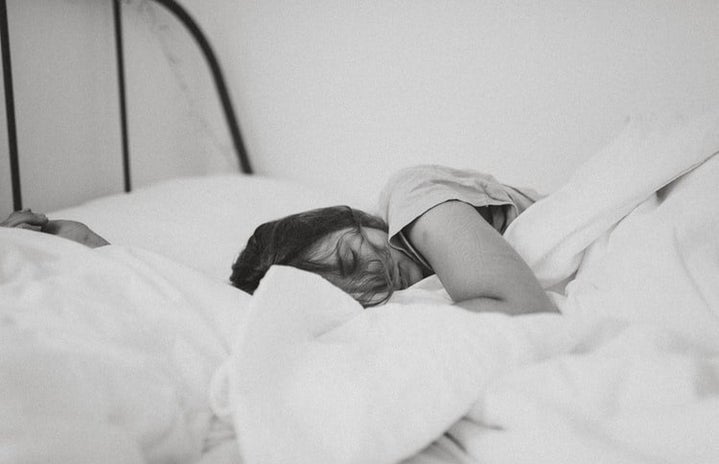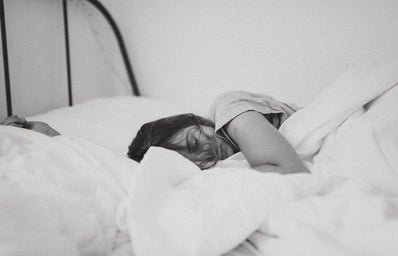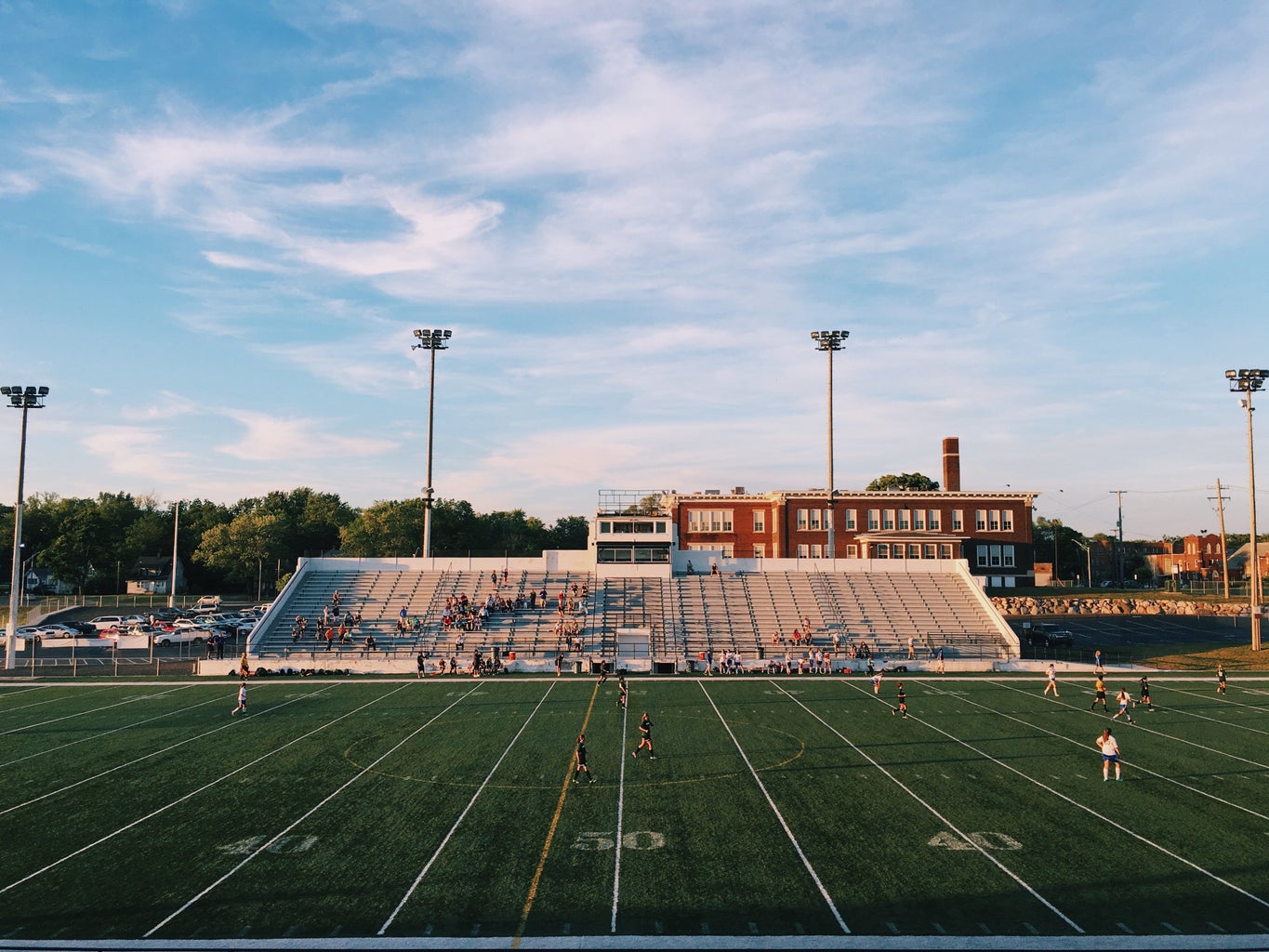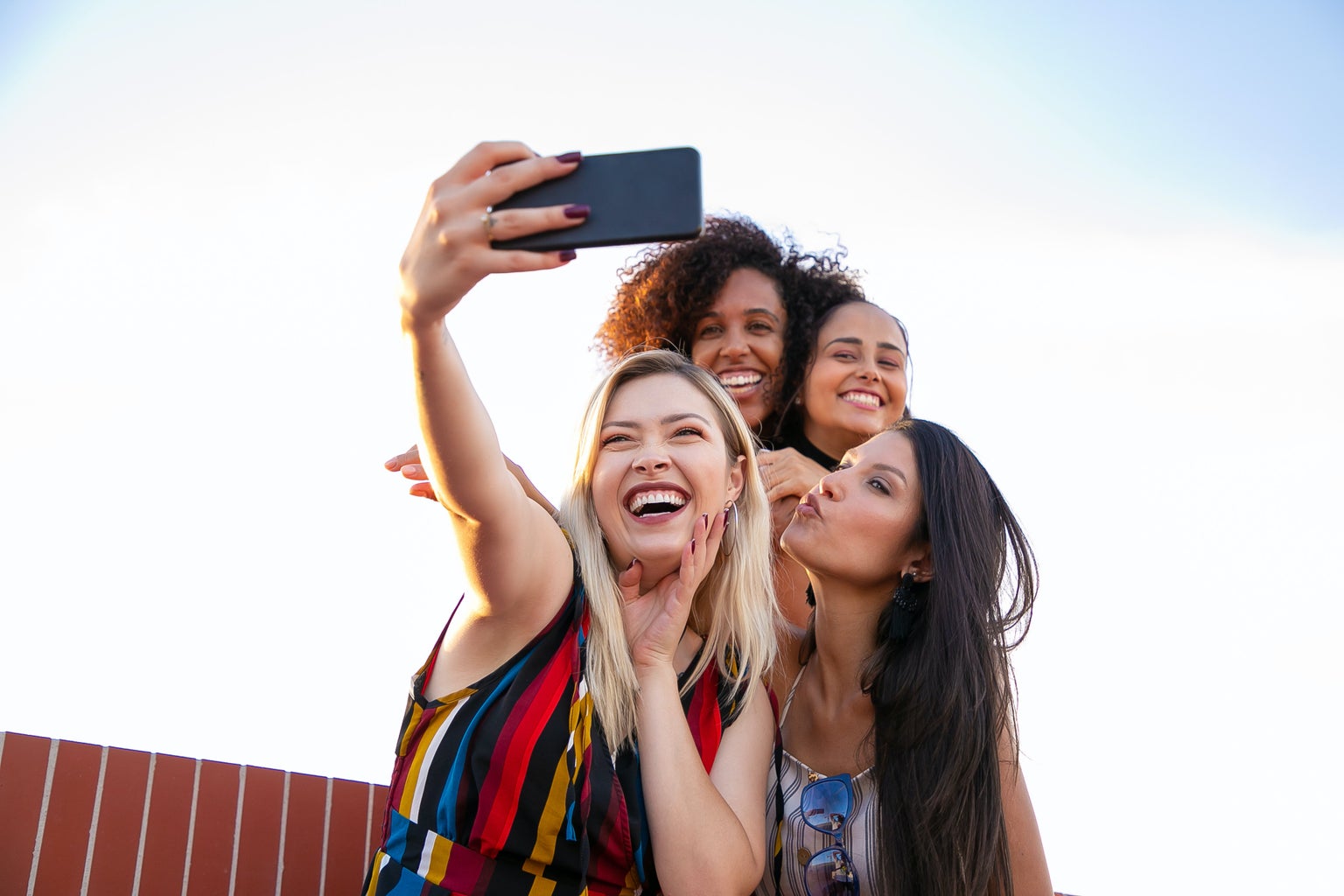It was the fall of 2019, a day that started the same as every other. Rushing to my neighbor’s car with a pack of Little Bites muffins in hand, shoes untied on my feet, just hoping to make it to school before the ring of the first bell. It was my boyfriend’s football senior night and I was decked out in his green and gold merchandise and of course my volleyball jersey (it was game night for us too). So to say I was bummed when I started to feel sick during my third period math class would be an understatement.
I’d had the stomach bug dozens of times before, but something about this feeling felt different. I was instantly weak, unable to stand up straight, and all of the color left my face. I went to the dreaded nurse’s office and waited for a ride home from school. I cried and cried that I’d be missing one of the most exciting Friday night lights games of my high school career. My mom and I both dismissed my symptoms as the generic stomach bug, so when they didn’t clear up, both of us were left confused.
Before I knew it, my body became incredibly sensitive to touch. If someone so much as grazed their hand against mine, I would become overwhelmed with a painful burning sensation. After a few of these episodes, I ended up going to the hospital and being treated with fluids and IV medication. I was then given antibiotics to treat neuropathy and was sent home. Shortly after, I rolled my ankle and ended up with three severe ligament tears, which was a dramatic result for such a common injury. I spent the next several months in a constant state of confusion, depression, and pain. I had no idea why all of these things kept happening to me and my doctors were also left stumped.
Long story short, my podiatrist, who was treating my ankle injury, reviewed my medical chart and thought my extensive medical history was unusual. Knee reconstruction at 13 years old just seemed like a fluke accident until he pointed out how uncommon that surgery is for someone that young. After flipping through dozens of pages with a furrowed brow, he snapped his neck up and said the words “Ehler’s Danlos Syndrome.” I, having no medical knowledge whatsoever, was completely clueless about what this diagnosis meant.
He patiently sat with me while he explained the ins and outs of this autoimmune disorder, but despite all of the informational handouts, I felt completely overwhelmed. After going home and crying to my mom about the unknown, I got to work. I researched everything there was to know about EDS. I joined support groups and reviewed academic journals — I read everything and anything out there about this chronic illness. I went to bed that night with two major takeaways: no case of EDS is the same and there was no cure all treatment. EDS would be with me for the rest of my life.
I spent another year still in pain, with new symptoms unearthing themselves at random, in and out of doctor’s offices. I was getting sick more often than most of my friends, arthritis kept me from exercising the way I used to, and my fatigue forced me to say no to countless social events. I was a shell of myself. My senior year ended abruptly due to the pandemic, and I’d be lying if I said I wasn’t stoked to do nothing but lay in bed. No more FOMO, no more trying to explain my sickness to my friends, no more risking another broken ankle. It was an EDS patient’s vacation. I spent the next three months of quarantine nourishing my body through low impact movement, rest, and dietary changes. I finally got into a groove of knowing what my body can and can’t tolerate.
Then came college. How was I going to start fresh? Meet new friends? Explain myself over again? I didn’t want to be branded “the sick friend” when it was already hard enough to meet new people. In the beginning, I tried to keep up with the socialization and the busyness of school, but as well as my personality could play the part, my body couldn’t. I got COVID ten times worse than my peers and was set back weeks.
After going back and forth about if I should tell my newfound friends about my EDS diagnosis, I decided to just be honest. My life was never going to look the same as my friends and I had to come to terms with the fact that I just couldn’t participate in every group activity. Contrary to my anxiety’s conviction, my friends couldn’t have been more supportive and understanding of my physical limitations and have met me with kindness on my tougher days ever since. Being honest with peers, professors, and friends made it so much easier for me to maintain a college life that is manageable for my health.
That being said, it’s not always sunshine and rainbows. Having a chronic illness that isn’t visible on the outside is one of the hardest parts about living with EDS. No one thinks I’m sick and some don’t even believe me even after I tell them. The day-to-day pain is inexplicable and something that only I will ever truly know. It’s a very lonely journey and so many tears have been cried because I just wish this wasn’t my reality. I could be the bubbliest and happiest person in the room, but still be in excruciating pain. It’s a deceiving disease — one I am still trying to figure out.
But I know one thing. I wouldn’t have made it through the past four years without the unconditional support of my friends. Their patience and accommodations have made me feel so much more “normal.” Take this as your reminder to remember that everyone has their struggles, even if you can’t see them. So be kind, be inclusive, and get to know someone before you place your judgment.
Can’t get enough of HC UMass Amherst? Be sure to follow us on Instagram, listen to us on Spotify, like us on Facebook, and read our latest Tweets



